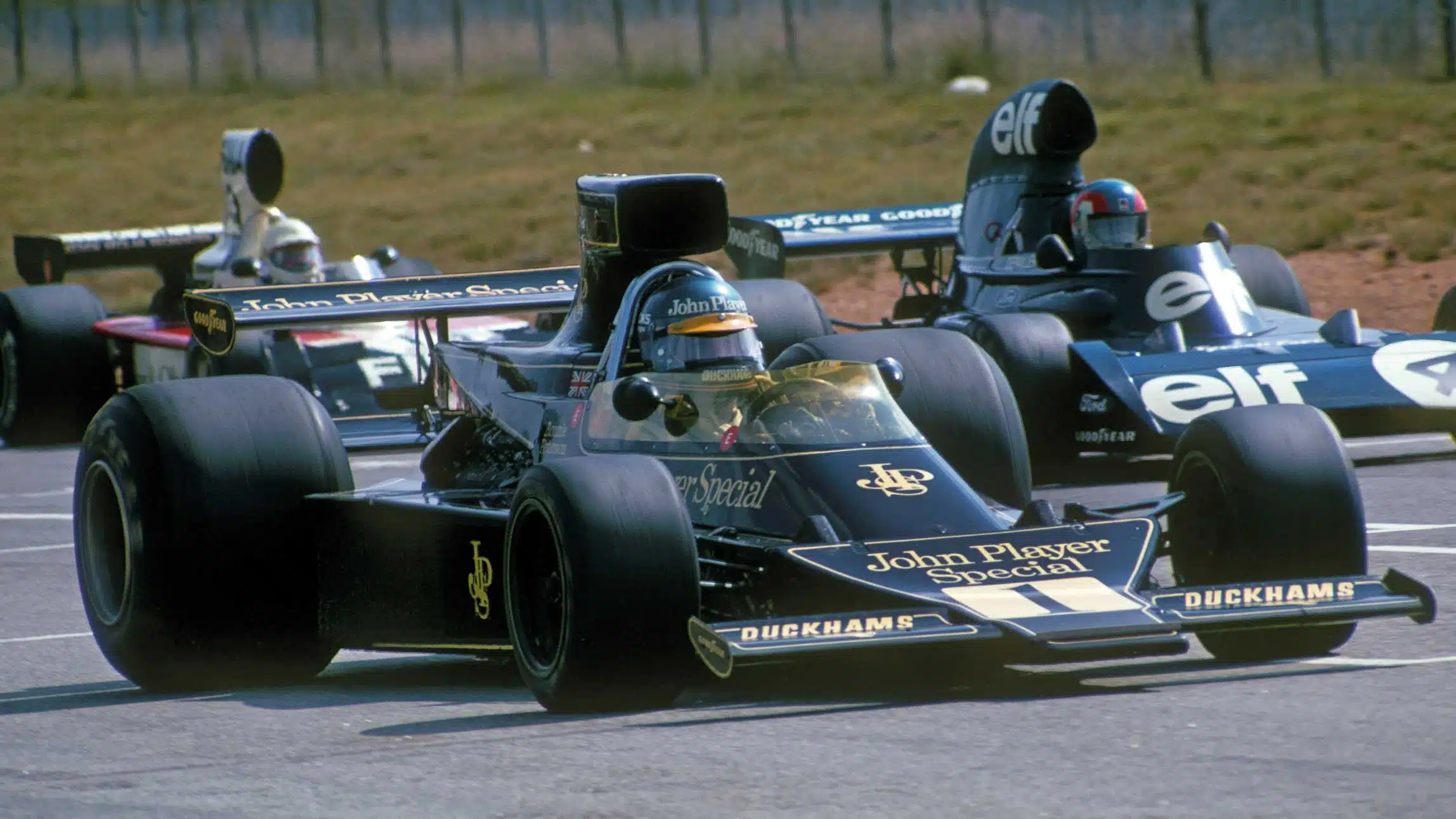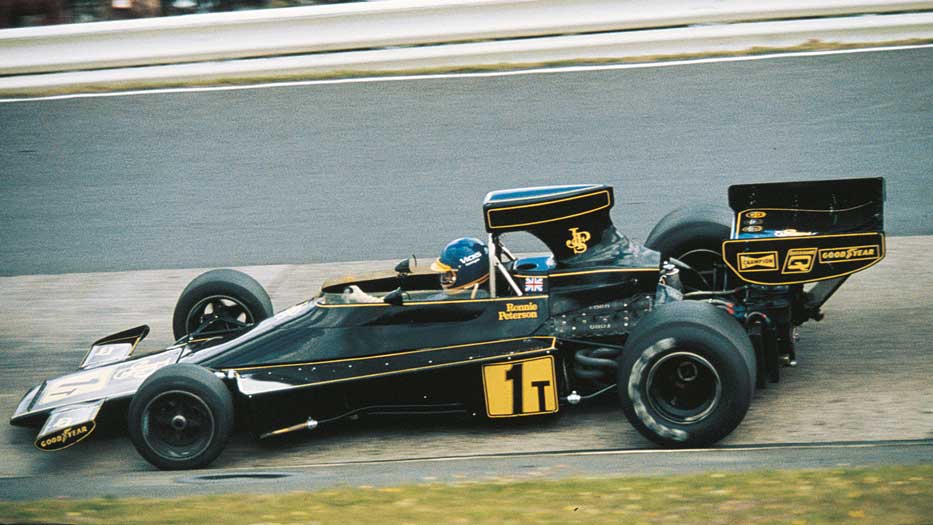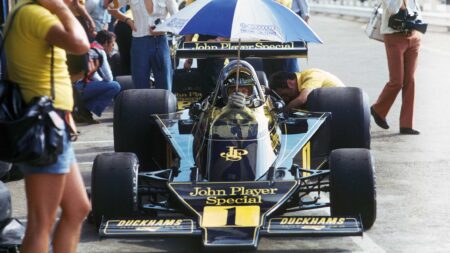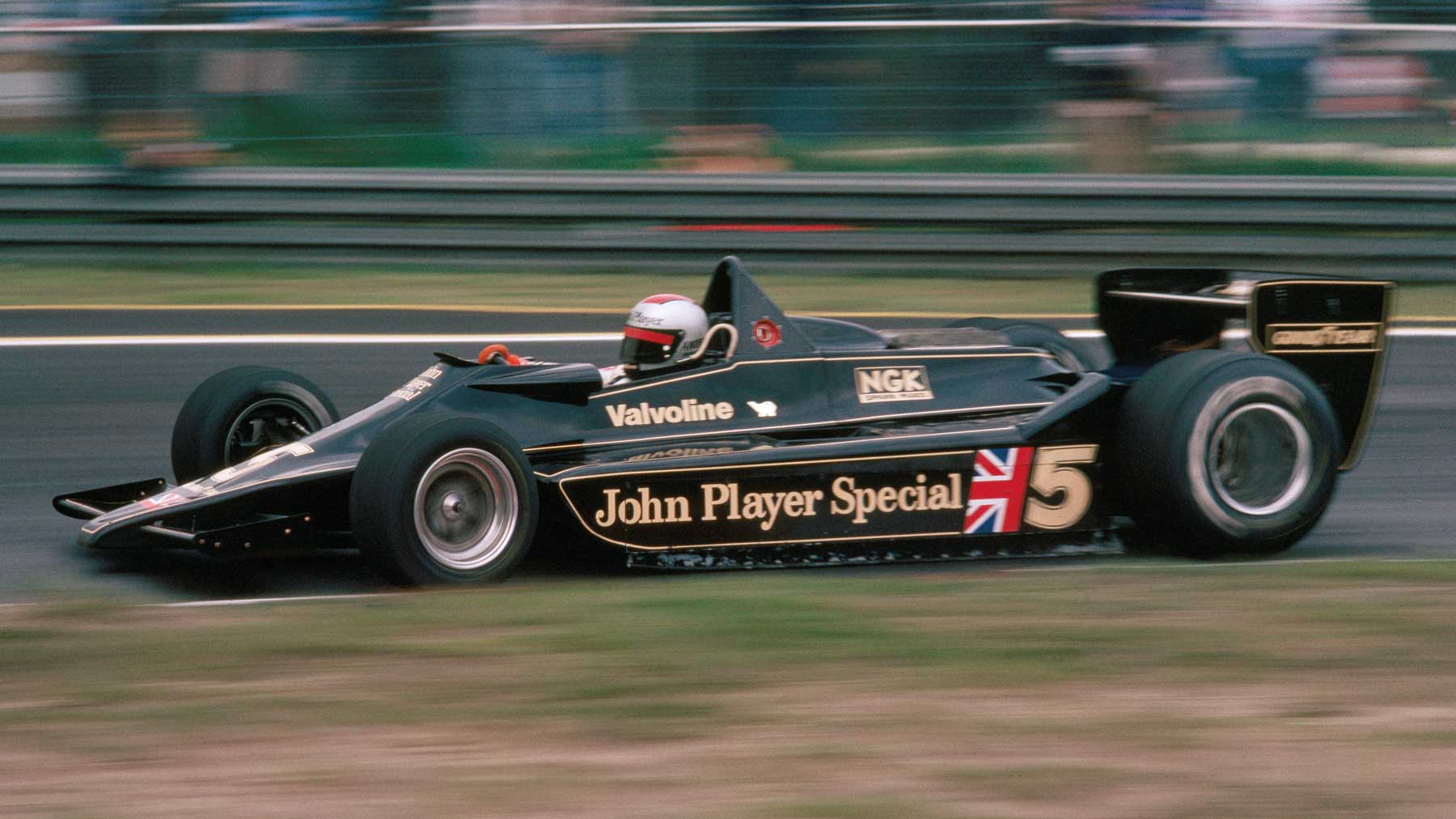Ultimately it would come to be the scapegoat focus of team manager Peter Warr and Ronnie Peterson, who preferred the 72 – but prior to its debut three races into 1974, hopes were pinned onto the car to bring more championship success
“Colin came to realise that the 72 was past it through the 1973 season,” says 76 designer Ralph Bellamy. “About halfway through the year, he said we needed another car. The requirement for what turned out to be the 76 was to make a car that was like the 72 only better engineered and more reliable.”
In addition to being more pliable – at least for the mechanics – due to a more rigid monocoque and suspension that was easier to work with, the 76 was also made the focus of some fairly lofty ambitions from the ‘old man’.
“I remember Chapman saying that he wanted it to be 100lb [45kg] lighter in fairly strong terms,” says Lotus draughtsman Geoff Aldridge. “It was his way to give people targets they couldn’t hit.”
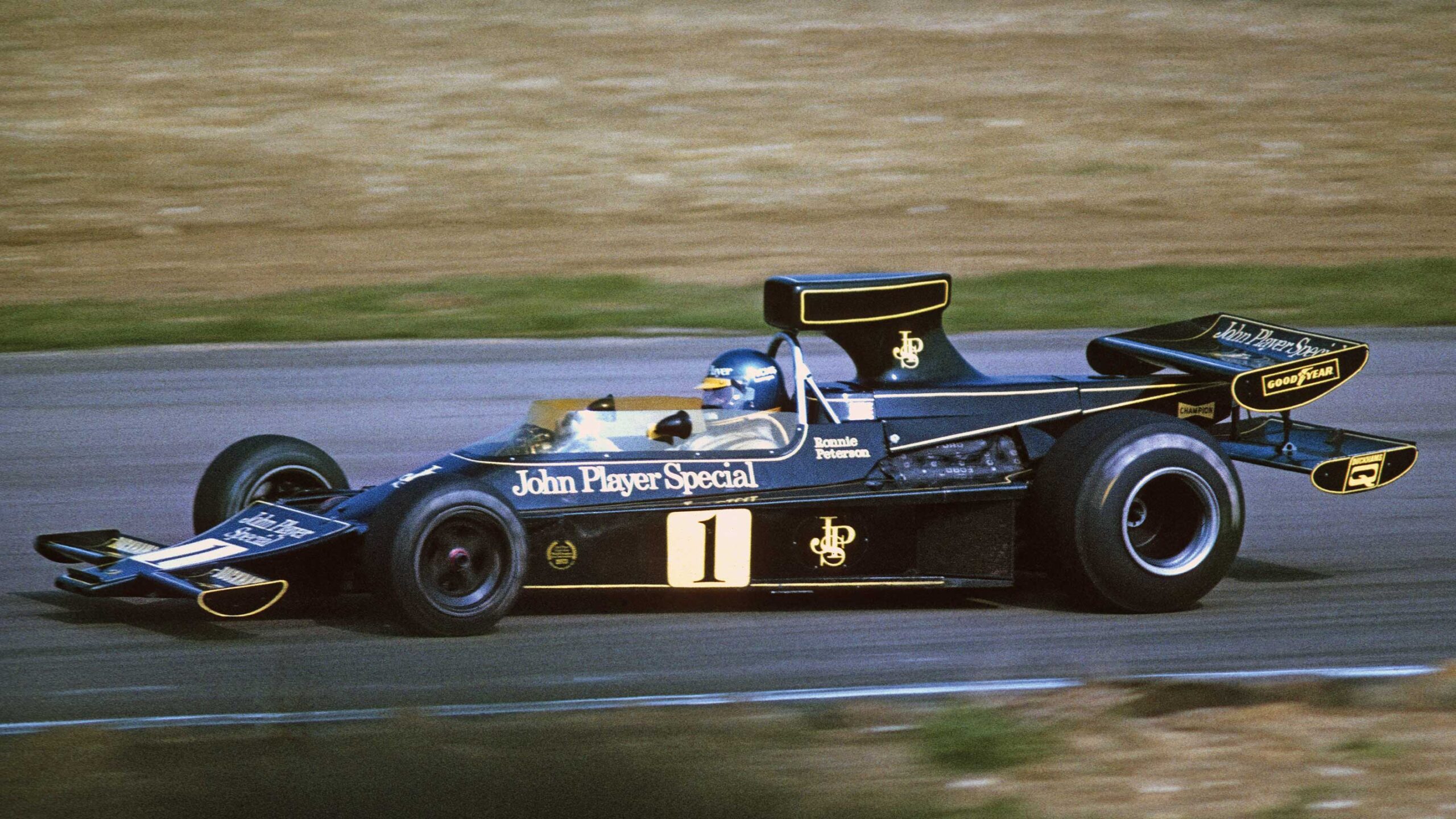
76 with unusual biplane rear-wing assembly
Grand prix photo
Also included in the brief was a rather unusual aerodynamic design. A biplane rear-wing was combined with a front assembly designed by Chapman himself, inspired by his new interest in marine vehicles.
“He called it the ventilated step,” says Bellamy. “He thought that if it worked on the underside of a boat it would work on the top of a racing car.”
